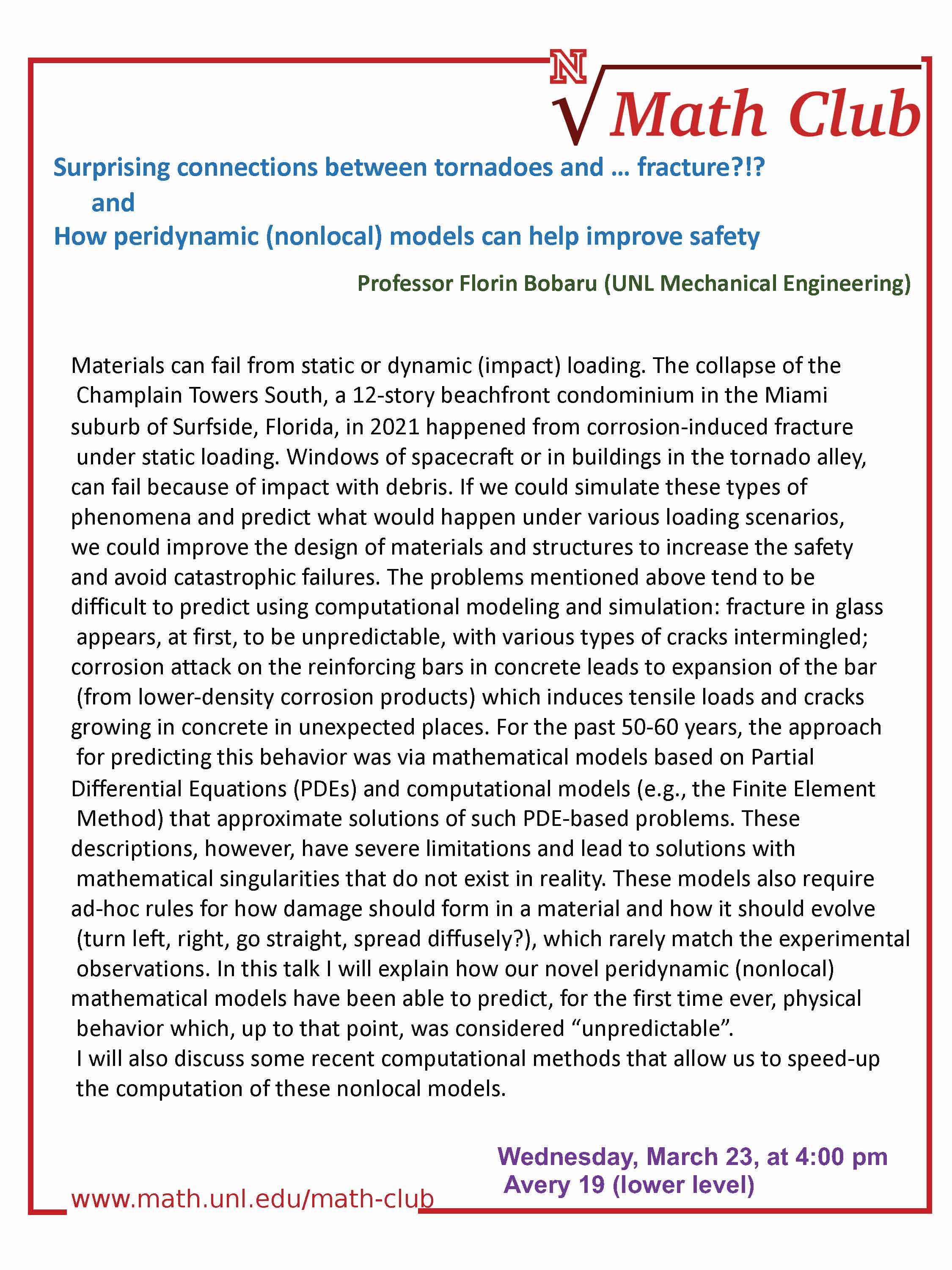
Math Club Event on March 23rd!
On Wednesday, March 23rd at 4 pm in 19 Avery Hall, the Math Club will host Professor Florin Bobaru who will present "Surprising connections between tornadoes and ... fracture?!?" The Math Club hopes to have pizza and soda available at this in-person only event.
Presenter: Professor Florin Bobaru, UNL Mechanical Engineering
Title: "Surprising connections between tornadoes and … fracture?!? and How peridynamic (nonlocal) models can help improve safety”
Abstract: Materials can fail from static or dynamic (impact) loading. The collapse of the Champlain Towers South, a 12-story beachfront condominium in the Miami suburb of Surfside, Florida, in 2021 happened from corrosion-induced fracture under static loading. Windows of spacecraft or in buildings in the tornado alley, can fail because of impact with debris. If we could simulate these types of phenomena and predict what would happen under various loading scenarios, we could improve the design of materials and structures to increase the safety and avoid catastrophic failures. The problems mentioned above tend to be difficult to predict using computational modeling and simulation: fracture in glass appears, at first, to be unpredictable, with various types of cracks intermingled; corrosion attack on the reinforcing bars in concrete leads to expansion of the bar (from lower-density corrosion products) which induces tensile loads and cracks growing in concrete in unexpected places. For the past 50-60 years, the approach for predicting this behavior was via mathematical models based on Partial Differential Equations (PDEs) and computational models (e.g. the Finite Element Method) that approximate solutions of such PDE-based problems. These descriptions, however, have severe limitations and lead to solutions with mathematical singularities that do not exist in reality. These models also require ad-hoc rules for how damage should forms in a material and how it should evolve (turn left, right, go straight, spread diffusely?), which rarely match the experimental observations. In this talk I will explain how our novel peridynamic (nonlocal) mathematical models have been able to predict, for the first time ever, physical behavior which, up to that point, was considered “unpredictable”. I will also discuss some recent computational methods that allow us to speed-up the computation of these nonlocal models.
Date: Wednesday, March 23, 2022
Time: 4 pm
Location: 19 Avery Hall